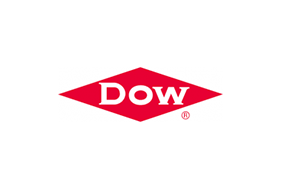Profile in Innovation: Jill Martin Ph. D, The Circular Economist
Published 11-23-22
Submitted by DOW
The case for circularity
We are always in search of new opportunities for innovation to retain the value of plastic materials throughout its life cycle. Our scientists and researchers work every day to design for recyclability and rethink how we can enable a new life for used plastics that would otherwise be waste destined for landfill or incineration. A circular economy revolves around materials being reused again and again, protecting our planet’s most valuable resources. These circular solutions are made possible through collaboration with like-minded partners, coupled with a deep understanding of value chain drivers that illustrate consumer wants and meet increased demand for companies to use more recycled materials in their products. It takes getting the right people and partnerships in place – from NGOs to recyclers to brand owners – and all value chain partners working together with their respective sets of expertise and resources to address the challenges at hand.
“When I retire from Dow, I want to leave behind 30,000 people excited about sustainability because of what we have been able to achieve as a business." - Jill Martin Ph. D
Using science to enable the future
Jill Martin, Global Sustainability Fellow at Dow, has focused intently on building the market awareness and technology expertise required to recapture the value of plastics. In fact, her interest in the management and recovery of end-of-life packaging and other plastic materials started when she was just a teenager after establishing a recycling program in her local community; then, later in grad school, she worked on a project to develop more efficient strategies for blending commonly recycled materials, such as polyethylene.
This early, long-held interest in sustainability continues to fuel her work today with Dow to grow a circular economy and develop carbon mitigation strategies to meet sustainable market and consumer needs. Recognizing how the time and cost investment to develop new technologies and business models benefits the entire value chain, Martin says, she is very much about the “economy” part of the "circular economy.” The success of Dow’s circularity programs cannot be attributed to one singular effort. We are continually looking for new partnerships and solutions to address the multi-faceted challenges around plastics circularity. This includes strategizing multi-generational plans that rely on all elements of the value chain. Martin emphasizes the collaborative nature of circular innovation leading to a successful journey ahead. “What’s most exciting to me about this work is its staying power,” she said. “If I were to leave Dow tomorrow, I would know that a generation of people would continue the path we started to build the relationships and technologies needed to drive circular, low-carbon solutions.”
WATCH VIDEO: Profile in Innovation: Jill Martin Ph. D, The Circular Economist

DOW
DOW
Dow (NYSE: DOW) is one of the world’s leading materials science companies, serving customers in high-growth markets such as packaging, infrastructure, mobility and consumer applications. Our global breadth, asset integration and scale, focused innovation, leading business positions and commitment to sustainability enable us to achieve profitable growth and help deliver a sustainable future. We operate manufacturing sites in 30 countries and employ approximately 36,000 people. Dow delivered sales of approximately $43 billion in 2024. References to Dow or the Company mean Dow Inc. and its subsidiaries.Learn more about us and our ambition to be the most innovative, customer-centric, inclusive and sustainable materials science company in the world by visiting www.dow.com.
More from DOW

